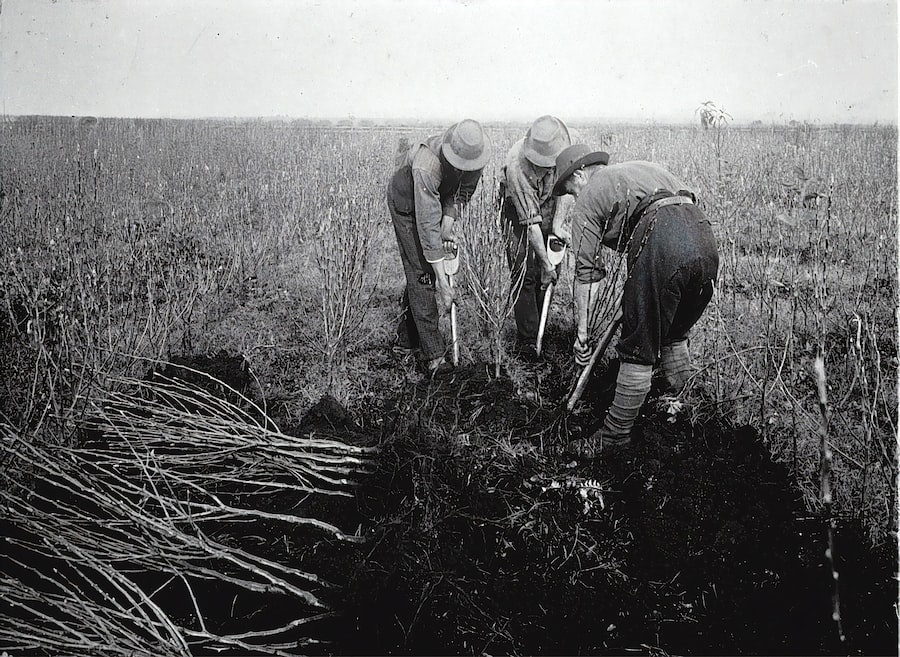Ready, Set, Carrots: How to Know When Your Carrots are Ripe for Harvesting

Carrots are a popular and versatile vegetable that can be enjoyed in a variety of dishes. Whether you’re growing carrots in your backyard garden or on a larger scale, knowing when and how to harvest them is crucial to ensure that you get the best flavor and texture. Harvesting carrots at the right time is important because it allows you to enjoy them at their peak freshness and sweetness. Additionally, harvesting carrots at the right time ensures that they don’t become overripe or woody, which can affect their taste and texture.
Key Takeaways
- Carrots are a popular root vegetable that can be harvested in a variety of ways.
- Understanding the growth cycle of carrots is important for determining when they are ready to be harvested.
- Factors that affect carrot ripeness include temperature, soil moisture, and sunlight exposure.
- Signs that your carrots are ready for harvesting include a bright orange color, a firm texture, and a tapered shape.
- Checking the size and shape of your carrots can be done by gently pulling them out of the ground and examining their roots.
Understanding the growth cycle of carrots
Carrots go through several stages of growth before they are ready to be harvested. Understanding these stages can help you determine when it’s the right time to harvest your carrots. The first stage is seed germination, where the carrot seeds sprout and develop into seedlings. This stage usually takes around 10 to 14 days.
The next stage is the vegetative growth stage, where the carrot plants develop their leaves and roots. During this stage, it’s important to provide the carrots with adequate water and nutrients to support their growth. Carrots prefer well-drained soil and require regular watering to prevent them from becoming dry and stunted.
The final stage is the root development stage, where the carrots start to form their edible roots. This stage usually takes around 60 to 80 days, depending on the variety of carrot you are growing. It’s important to monitor the progress of your carrots during this stage to ensure that they are not overripe or underdeveloped.
Factors that affect carrot ripeness
Several factors can affect the ripeness of carrots, including temperature, soil conditions, and water availability. Carrots prefer cool temperatures for optimal growth, with temperatures between 60°F and 70°F being ideal. High temperatures can cause the carrots to become bitter and woody, while low temperatures can slow down their growth.
Soil conditions also play a crucial role in carrot ripeness. Carrots prefer loose, well-drained soil that is rich in organic matter. Compacted or heavy soils can hinder root development and result in misshapen or stunted carrots. It’s important to prepare the soil properly before planting carrots to ensure optimal growth.
Water availability is another important factor to consider when growing carrots. Carrots require regular watering to keep the soil moist but not waterlogged. Inconsistent watering can cause the carrots to crack or become misshapen. It’s important to water your carrots deeply and evenly to ensure that they receive adequate moisture.
Signs that your carrots are ready for harvesting
| Signs that your carrots are ready for harvesting |
|---|
| The carrot tops are about 2-3 inches tall and have a healthy green color |
| The carrot roots are about 1/2 inch in diameter at the top of the root |
| The carrot roots are firm and crisp to the touch |
| The carrot roots have a bright orange color |
| The carrot roots easily pull out of the ground with a gentle tug |
There are several signs that indicate that your carrots are ready for harvesting. The first sign is the size of the carrot. Carrots should be of a decent size before they are harvested, usually around 1 inch in diameter for most varieties. However, baby carrots can be harvested when they are smaller, around 1/2 inch in diameter.
Another sign to look for is the color of the carrot tops. When the carrot tops start to turn yellow or brown, it’s a good indication that the carrots are ready for harvesting. Additionally, you can gently pull back the soil around the base of the carrot to check its color. If the carrot has a vibrant orange color, it’s a sign that it’s ripe and ready to be harvested.
Lastly, you can also check the texture of the carrot by gently feeling it with your fingers. Ripe carrots should feel firm and crisp, with no signs of softness or sponginess. If the carrot feels soft or mushy, it’s an indication that it’s overripe and should be harvested immediately.
How to check the size and shape of your carrots
To check the size of your carrots, gently pull back the soil around the base of the carrot and examine its diameter. Most varieties of carrots are ready for harvesting when they reach a diameter of around 1 inch. However, baby carrots can be harvested when they are smaller, around 1/2 inch in diameter.
In terms of shape, carrots should ideally be straight and uniform in shape. Misshapen or forked carrots can be a sign of poor soil conditions or inconsistent watering. It’s important to provide your carrots with the right growing conditions to ensure that they develop into straight and uniform shapes.
Tips for checking the color and texture of your carrots

To check the color of your carrots, gently pull back the soil around the base of the carrot and examine its color. Ripe carrots should have a vibrant orange color. If the carrot has a pale or yellowish color, it’s an indication that it’s not fully ripe yet. On the other hand, if the carrot has a dark or brownish color, it’s a sign that it’s overripe and should be harvested immediately.
In terms of texture, ripe carrots should feel firm and crisp when gently squeezed. Avoid carrots that feel soft or mushy, as they are likely overripe and may have a woody texture. It’s important to harvest your carrots at the right time to ensure that they have the best texture and flavor.
Harvesting techniques for different types of carrots
The harvesting technique for carrots depends on the type of carrot you are growing. For most varieties, you can simply grasp the carrot top near the soil line and gently pull it out of the ground. However, if you encounter resistance or if the carrot breaks off, you can use a garden fork or trowel to loosen the soil around the base of the carrot before pulling it out.
For baby carrots, you can simply grasp the carrot top near the soil line and gently pull it out of the ground. Baby carrots are usually harvested when they are smaller, around 1/2 inch in diameter. It’s important to be gentle when harvesting baby carrots to avoid damaging their delicate roots.
How to store your harvested carrots properly
Proper storage is crucial to ensure that your harvested carrots stay fresh and flavorful for as long as possible. The first step is to remove the carrot tops, as they can draw moisture away from the roots and cause the carrots to become soft or wilted. You can either cut off the tops or twist them off gently.
After removing the tops, it’s important to clean the carrots thoroughly to remove any dirt or debris. You can rinse them under cold water or gently scrub them with a vegetable brush. Once cleaned, allow the carrots to dry completely before storing them.
Carrots can be stored in a cool, dark place such as a root cellar or refrigerator. The ideal storage temperature for carrots is around 32°F to 40°F. Carrots should be stored in a perforated plastic bag or a container with ventilation holes to allow for air circulation. Avoid storing carrots near fruits such as apples or pears, as they release ethylene gas which can cause the carrots to become bitter.
Common mistakes to avoid when harvesting carrots
One common mistake that people make when harvesting carrots is waiting too long to harvest them. Carrots that are left in the ground for too long can become overripe and develop a woody texture. It’s important to monitor the progress of your carrots and harvest them at the right time to ensure optimal flavor and texture.
Another mistake is harvesting carrots too early. Carrots that are harvested before they are fully ripe may not have developed their full flavor and sweetness. It’s important to be patient and wait until the carrots are of a decent size and have reached their desired color before harvesting them.
Lastly, another common mistake is not properly preparing the soil before planting carrots. Carrots prefer loose, well-drained soil that is rich in organic matter. It’s important to till the soil and remove any rocks or debris before planting carrots. Additionally, adding compost or well-rotted manure to the soil can help improve its fertility and structure.
Enjoying the fruits of your labor
Harvesting carrots at the right time is crucial to ensure that you get the best flavor and texture. By understanding the growth cycle of carrots and monitoring their progress, you can determine when it’s the right time to harvest them. Checking the size, shape, color, and texture of your carrots can help you determine their ripeness.
Harvesting techniques may vary depending on the type of carrot you are growing, but in general, you can simply grasp the carrot top near the soil line and gently pull it out of the ground. Proper storage is also important to ensure that your harvested carrots stay fresh and flavorful for as long as possible.
By avoiding common mistakes and following these guidelines, you can enjoy the delicious and nutritious carrots that you have harvested. Whether you use them in soups, salads, or as a healthy snack, homegrown carrots are a rewarding addition to any meal. So get out there and start harvesting those carrots!
If you’re wondering how to tell when carrots are ready to harvest, look no further than this informative article from Lawn World. With expert tips and guidance, this article provides valuable insights on determining the perfect time to harvest your carrots for maximum flavor and nutrition. From checking the size and color of the carrot tops to gently pulling up a few test carrots, this article covers all the essential techniques. Don’t miss out on this helpful resource – check it out here!



